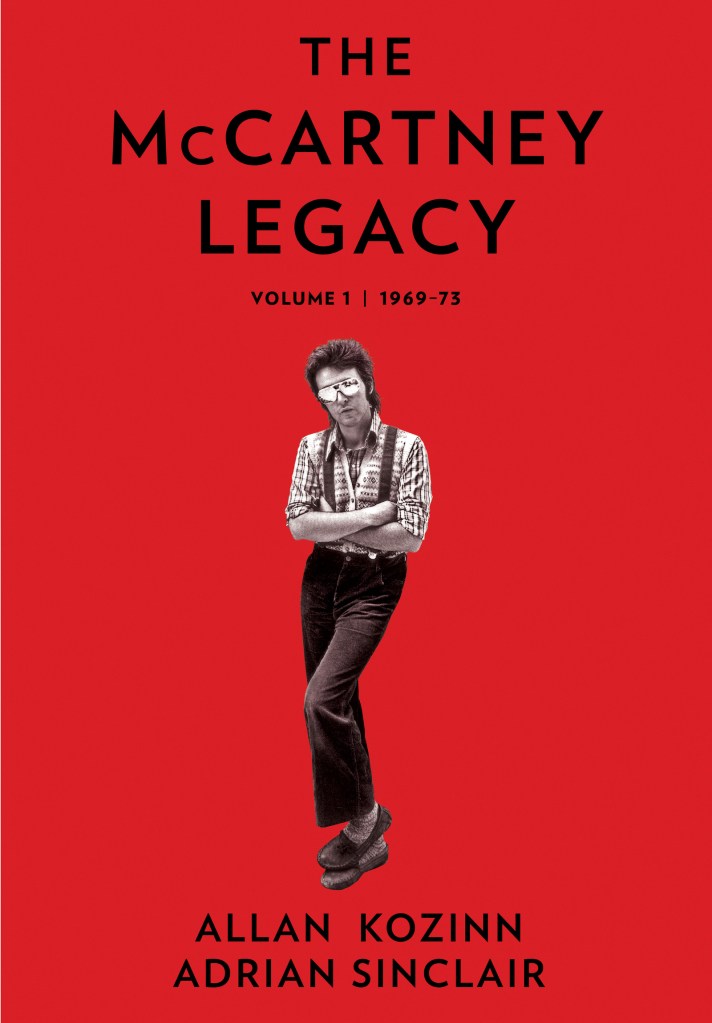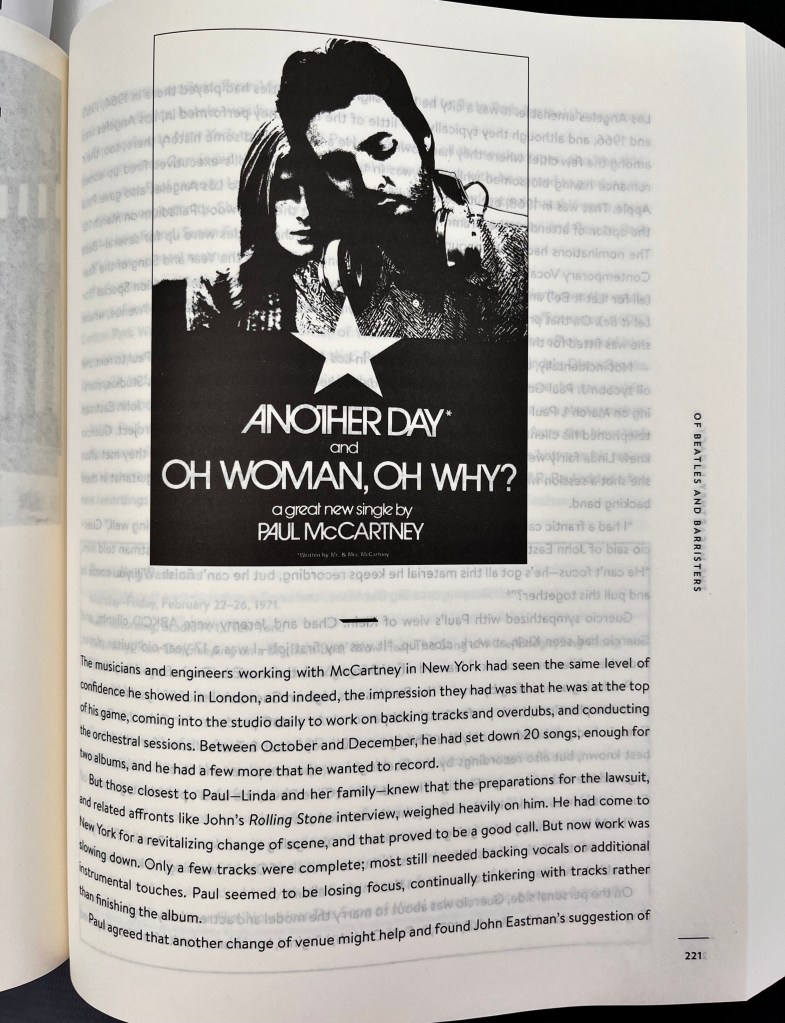Cool cover, huh?
That cover is a harbinger of what is contained inside.
Let’s get straight to the point – this is one of the best studies of Paul McCartney and his solo music you are going to find. Epic and essential, full stop.
The McCartney Legacy by Allan Kozinn and Adrian Sinclair is the first installment of what will become a multi-volume set. As its subtitle suggests, Volume 1 captures the life of McCartney in the years 1969-1973. That’s immediately following the dissolution of the Beatles, a period in which he had to recreate himself as both a person and a performer. In musical terms, this first volume takes us from the LP McCartney through to Band On The Run.
This book is a seriously in-depth and revealing exploration of McCartney’s creative and personal life. The thought and research that has gone into it is immediately evident. But it’s not scholarly and cold in tone (as some highly researched books can be). It’s actually a real page-turner! Kozinn and Sinclair write in a conversational and descriptive style that belies the hundreds of interviews, extensive ground-up research, and the thousands of never-before-seen documents they’ve trawled to give us a very approachable and personal story. They are very good storytellers and it is almost guaranteed that every couple of pages you will learn something you didn’t know about Paul McCartney and his music.
Kozinn and Sinclair initially set out to do a book about McCartney’s solo time in the studio, detailing recording dates, personnel, etc. – a bit like Mark Lewisohn’s 1988 book The Complete Beatles Recording Sessions, but looking at Paul’s solo career. However, following a couple of interviews with former Wings drummer Denny Seiwell and the discovery of a treasure trove of additional information that he had, the pair decided to change tack and broaden the scope of their book considerably.
Once you read this book you’ll have a renewed insight into the music McCartney created across this period. In fact with the clever connections the authors make and the stories they tell you’ll never be able to hear some songs in the same light again. Take for example ‘Another Day’. In late 1970 and early 1971 the song was being recorded and worked on as part of the preparations for the album Ram. But Paul, knowing that in February 1971 he had coming up a key court date in the messy ‘divorce’ proceedings that were under way with his former band mates, wanted a new single to be out and played on the radio to coincide with his and Linda’s court appearance. He settled on that single being ‘Another Day’ to send a subtle message that nothing could faze him. Despite his life and business dealings being publicly picked over, for him this was just another day: “It’s just another day, du-du-du-du-du, it’s just another daaaaaay!”
Alongside the copious information on every page there are many illustrative photographs and memorabilia scattered throughout as well, as are frequent breakout boxes containing the aforementioned dates detailing his recording sessions.
If this truly is the first of a multi-volume set, let’s hope that subsequent volumes arrive much faster than Lewisohn’s 2013 biography of The Beatles. Ten years later we are still waiting for Volume 2 of his epic…..
Kozinn and Sinclair however say they’re well under way with preparations for The McCartney Legacy Volume 2. It should be in stores in late 2024. It will cover the years 1974 – 1980. We can’t wait to read the next installment!
Volume 1 is getting rave reviews. The only criticism of it we’ve seen so far is that the font used is a bit small and spindly to read! (FYI it looks like a slight variation of a font called Brandon Text Light).
You can read a generous extract of The McCartney Legacy here to see if you like what you see.
If audio books are more your thing, here’s an extract from the Introduction, read by Simon Vance, to further whet your appetite:
The McCartney Legacy Volume 1 is published by Dey Street books (an imprint of Harper Collins).
It’s available in hardcover, paperback, e-book and, as mentioned, an audio book and audio CD:
The McCartney Legacy Volume 1 1969-73 is highly recommended.





